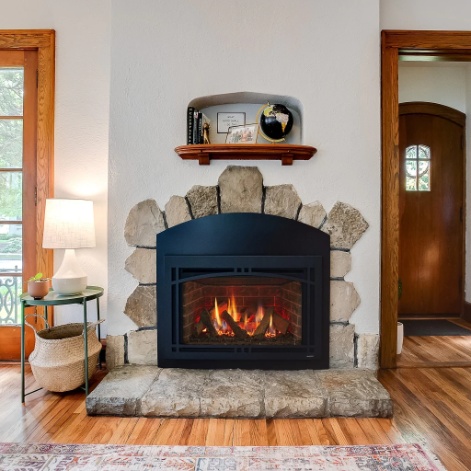Table of Contents
Garage doors are an essential part of every home, providing security and convenience.
In this article, we will explore the different types of garage doors, such as sectional, roll-up, side-hinged, and tilt-up. We will also discuss the key components of a garage door, including panels, springs, tracks, rollers, cables, and openers.
Understanding how garage doors work, with their opening and closing mechanism, counterbalance system, and safety features, this article will help you troubleshoot common issues like misaligned tracks, broken springs, and malfunctioning openers.
Learn tips on maintenance and care for your garage doors, including regular lubrication, inspecting and replacing parts, and cleaning and painting.
Stay tuned for valuable insights on how to keep your garage doors functioning smoothly for years to come.
Types of Garage Doors
Garage doors come in various types, each offering unique features and benefits for homeowners.
Sectional garage doors, for instance, are popular due to their horizontal panels that open vertically and then horizontally along the ceiling. They are great for maximizing space in the garage.
Roll-up doors roll vertically to open, making them ideal for garages with limited ceiling space.
Side-hinged doors swing open on hinges like traditional doors, providing a classic look for homes.
Tilt-up doors, on the other hand, are a single piece that tilts up and slides into the ceiling, suitable for garages with ample overhead space.
Sectional Garage Doors
Sectional garage doors are a popular choice among homeowners due to their practicality and space-saving design.
These doors are made up of separate horizontal panels that are connected by hinges, allowing them to bend when the door opens and closes.
The panels glide along tracks on both sides of the door frame, moving vertically upwards and then horizontally parallel to the ceiling, maximizing the overhead space in the garage.
This unique mechanism makes sectional garage doors a great option for garages with limited headroom or those seeking a modern aesthetic.
The insulation properties of sectional doors help regulate temperature inside the garage, making them energy-efficient and cost-effective in the long run.
Roll-Up Garage Doors
Roll-up garage doors are known for their compact design and smooth operation, making them ideal for limited space areas.
The roll-up feature of these doors allows them to vertically fold up into a tight coil above the door opening, maximizing the available space both inside and outside the garage. This innovative design is especially beneficial for garages with limited headroom or where space is at a premium. The operational mechanism of roll-up garage doors typically involves a drum and spring system, which enables effortless opening and closing with minimal noise. This makes them an excellent choice for residential areas where noise pollution is a concern.
Side-Hinged Garage Doors
Side-hinged garage doors offer a traditional look and easy manual operation, appealing to homeowners seeking a classic aesthetic.
Their swinging mechanism allows them to open outwards, providing convenience and quick access to the garage space. The manual operation adds a touch of nostalgia and simplicity, making them a popular choice for those who prefer traditional methods.
These doors come in a variety of designs and materials, from traditional wooden styles to more contemporary metal options, ensuring that they can complement a wide range of architectural styles. Whether you have a modern home or a more rustic property, side-hinged garage doors can enhance the overall look and functionality of your space.
Tilt-Up Garage Doors
Tilt-up garage doors feature a simple yet effective mechanism using springs for smooth movement, providing a reliable option for garage entrances.
These types of garage doors are designed to tilt upwards and slide into the ceiling space when opened, allowing for maximum clearance in the garage area. The spring mechanism plays a crucial role in this operation, as it counterbalances the door’s weight, making it easy to open manually or with an automatic garage door opener. Homeowners benefit from the tilt-up design as it eliminates the need for tracks along the ceiling, freeing up overhead space and providing a clean aesthetic look to the garage.
Components of a Garage Door
Garage doors consist of several key components such as panels, springs, tracks, rollers, cables, and openers, each playing a vital role in the door’s operation.
The panels are the sections of the door that make up its surface and provide both security and aesthetics.
Springs, either torsion or extension, assist in lifting and lowering the door smoothly.
Tracks guide the door’s movement, ensuring it opens and closes correctly.
Rollers help the door move along the tracks with minimal friction.
Cables work in conjunction with the springs to support the weight of the door.
Openers, whether manual or automatic, control the door’s motion.
Regular maintenance of these components is essential to ensure the garage door functions properly and lasts longer.
Panels
Garage door panels form the visible face of the door, contributing to the overall design and aesthetic appeal of the garage entrance.
These panels play a crucial role in enhancing the curb appeal of a home, making them a key component in the exterior aesthetics. Homeowners have a wide array of design options to choose from when it comes to garage door panels. From traditional raised panels to modern flush designs, the versatility in styles allows homeowners to match their door with the overall architecture of their property. Materials like steel, wood, aluminum, and composite are commonly used for these panels, offering durability and customization opportunities. Custom finishes, colors, and window inserts further add a personal touch to the door, making it a focal point of the facade.
Springs
Garage door springs serve as a critical component in the counterbalance system, enabling smooth and balanced door operation.
These springs come in two main types:
- Torsion springs: Mounted above the door, providing a twisting force to lift the door.
- Extension springs: Placed on either side, stretching and contracting to support the door’s weight.
Regular maintenance, such as lubrication and inspection for wear and tear, is essential to ensure the springs are functioning optimally. It is also important to follow safety precautions when working with garage door springs, as they are under high tension and can be dangerous if mishandled.
Tracks
Garage door tracks guide the door’s movement, ensuring smooth operation and proper alignment for efficient opening and closing.
Proper alignment of the tracks is essential for the garage door to function correctly. Over time, tracks can become misaligned due to factors like regular usage or impact. To maintain track alignment, periodically inspect the tracks for any bends, dents, or obstructions.
Use a level to ensure that the tracks are straight and parallel to each other. In case of track issues, such as misalignment causing the door to stick or make unusual noises, adjusting the track brackets or tightening loose bolts can often resolve the problem.
Rollers
Garage door rollers facilitate smooth movement along the tracks, reducing friction and enhancing the overall operational efficiency of the door.
Different types of rollers are commonly used in garage doors, including nylon, steel, and plastic rollers, each offering unique benefits. Nylon rollers are known for their quiet operation, while steel rollers are durable and can support heavier doors. Regular maintenance of these rollers, such as lubrication and inspection for wear and tear, is crucial to ensure optimal performance of the garage door. Neglecting roller maintenance can lead to increased noise during operation, uneven movement, and premature wear on other parts of the door mechanism.
Cables
Garage door cables work in conjunction with pulleys to lift and lower the door, providing a reliable lifting mechanism for daily use.
The cables play a crucial role in the system by being responsible for carrying the weight of the door. Pulleys, on the other hand, help to guide the cables in a way that allows for smooth and efficient movement.
To keep the system functioning properly, regular maintenance is key. This includes lubricating the cables and pulleys to prevent rust and wear. Safety is paramount when dealing with these components, so ensuring that the cables are not frayed or damaged is essential to prevent accidents and maintain the integrity of the garage door system.
Openers
Garage door openers automate the door’s operation, offering convenience and security through remote control or sensor-based activation.
This technology enables homeowners to operate their garage doors from a distance, providing ease of access without the need to physically open or close the door. By simply pressing a button on the remote control, individuals can easily open or close their garage doors while remaining in their vehicles.
The integration of sensors enhances safety measures by detecting any obstacles in the door’s path, preventing accidents or damage. These safety features ensure that the door stops and reverses if an obstruction is detected during closing, making it a reliable and secure system for households.
How Do Garage Doors Work?
Garage doors operate through a complex mechanism that involves a counterbalance system, safety features, and precise alignment of components for smooth functionality.
The opening mechanism of garage doors typically consists of a torsion spring system or extension springs attached to the door’s frame, allowing for controlled movement when opening and closing. The counterbalance system plays a crucial role in balancing the weight of the door, preventing it from crashing down and ensuring safe operation. Safety features such as sensors and auto-reverse mechanisms are installed to detect obstacles in the door’s path and prevent accidents. Proper alignment of components such as tracks, rollers, and hinges is essential for the door to move smoothly and avoid unnecessary strain on the system.
Opening and Closing Mechanism
The opening and closing mechanism of a garage door relies on a series of interconnected components that work together to facilitate seamless door operation.
Essential to this process are the torsion springs, which are responsible for counterbalancing the weight of the door. These high-tension springs store potential energy when the door is closed and release it to assist in lifting the door.
The horizontal tracks guide the door’s movement, ensuring it opens and closes smoothly. Rollers attached to the door panels move along these tracks, preventing friction and enabling effortless operation.
Garage door openers play a crucial role, providing automated control for convenient opening and closing at the touch of a button.
Counterbalance System
The counterbalance system of a garage door, primarily supported by springs, plays a crucial role in offsetting the door’s weight and ensuring smooth operation.
The springs in the counterbalance system act as the main source of tension to support the door’s weight, allowing it to open and close with ease. Regular maintenance of these springs is vital to ensure their proper functioning and to prevent sudden failures that could lead to accidents or damage. It is recommended to have a professional inspect and adjust the tension of the springs periodically to keep them in optimal condition.
Safety considerations regarding the counterbalance mechanism include avoiding DIY adjustments, as the high tension in the springs can be dangerous if mishandled.
Safety Features
Garage doors are equipped with safety features such as sensors and auto-reverse mechanisms to prevent accidents and ensure user protection during operation.
These sensors are designed to detect any obstructions in the door’s path, automatically stopping and reversing the door’s movement to prevent collisions with objects or individuals. The auto-reverse function plays a crucial role in ensuring that the door reverses direction if it encounters an obstacle while closing, reducing the risk of entrapment.
Garage doors are equipped with safety mechanisms such as manual release devices to allow for manual operation in case of power outages or emergencies, further enhancing user security and convenience.
Common Issues with Garage Doors
Garage doors may experience common issues like misaligned tracks, broken springs, or malfunctioning openers, impacting their performance and functionality.
Misaligned tracks can cause the door to operate unevenly or get stuck during opening or closing. To troubleshoot, visually inspect the tracks for any bends or gaps and gently realign them if needed.
Broken springs are a safety hazard and can make the door difficult to operate. It’s crucial to replace them promptly with the correct type and size to ensure smooth functioning.
Opener malfunctions, such as a faulty motor or sensor, can often be resolved by checking the power source, adjusting the settings, or calling a professional for further assistance.
Misaligned Tracks
Misaligned tracks can hinder the smooth operation of a garage door, requiring adjustments and realignment to restore proper functionality.
When garage door tracks become misaligned, it can lead to a variety of issues such as the door getting stuck or making loud grinding noises during operation. This misalignment can result from loose screws, worn-out rollers, or even physical obstructions in the track. If left unaddressed, the misaligned tracks can put additional strain on the garage door opener, leading to potential motor burnout or track damage. Consequently, timely track adjustment and realignment are essential to prevent further damage and ensure the smooth functioning of the garage door.
Broken Springs
Broken springs are a common issue in garage doors that necessitate prompt replacement to restore the door’s balance and functionality.
Two main types of garage door springs commonly in use are extension springs and torsion springs. Extension springs are located above the upper tracks of the garage door and stretch and contract to assist in the opening and closing of the door. On the other hand, you mount torsion springs directly above the door, and they unwind to raise the door and wind up to lower it.
Signs of spring damage include difficulty in lifting the door, visible gaps in the spring coils, or a loud banging noise when opening or closing the door. It is crucial to address spring issues promptly to avoid further damage to the door and ensure the safety of everyone in the vicinity.
When you replace garage door springs, you should highly consult a professional technician with the expertise and proper tools to safely perform the repair. Always remember to follow safety precautions, like wearing protective gear and making sure to securely prop the door open during the replacement process.
Malfunctioning Opener
A malfunctioning garage door opener can disrupt the door’s automatic operation, requiring troubleshooting steps to identify and resolve the underlying issues.
Common causes of garage door opener malfunctions include faulty wiring, sensor misalignment, or worn-out motor components.
To troubleshoot, check the sensors for proper alignment and remove any obstructions. Inspect the wiring for any damages or loose connections.
Regular maintenance, such as lubricating moving parts and cleaning sensors, can prevent issues.
If troubleshooting doesn’t solve the problem, it may be necessary to seek professional repair services to replace worn-out components or recalibrate the opener mechanism.
Maintenance and Care for Garage Doors
Maintenance and care are essential for ensuring the optimal performance and longevity of garage doors, involving lubrication, part inspection, and cleaning.
Lubrication plays a crucial role in maintaining the smooth operation of garage doors. Applying lubricant to the hinges, rollers, and springs on a regular basis helps prevent friction and wear, ultimately extending the lifespan of the door.
Inspecting parts such as cables, tracks, and sensors for any signs of damage or wear is vital in detecting issues early on and preventing potential accidents. Regularly cleaning the door and its surroundings, removing dirt, debris, and rust, also contributes to the door’s efficiency and overall aesthetic appeal.
Regular Lubrication
Lubrication of moving parts such as rollers, tracks, and hinges is crucial for maintaining the smooth operation and longevity of garage doors.
Proper lubrication of these key components ensures the reduction of friction, which can cause wear and tear over time. When lubricating the rollers, tracks, and hinges, you should use a silicone-based or lithium-based lubricant, as manufacturers design these to withstand varying temperatures and conditions.
Applying the lubricant generously, but not excessively, along the entire length of the tracks and on the hinges where metal-to-metal contact occurs is essential. Ideally, you should carry out this lubrication process every six months to a year to prevent issues and ensure optimal performance.
Inspecting and Replacing Parts
Regular inspection of garage door parts is necessary to identify wear and damage, allowing for timely replacement and maintenance to prevent operational issues.
Worn components in a garage door can lead to safety hazards and compromise the functionality of the entire system. Common signs of wear include frayed cables, dented panels, and rusted hardware.
When inspecting the parts, pay close attention to the springs, rollers, hinges, and tracks as these are critical for smooth operation. If any components show signs of wear, it is crucial to replace them promptly to avoid costly repairs or accidents.
Sourcing high-quality replacement parts from reputable suppliers like Dreifuss ensures durability and prolonged functionality of the garage door system.
Cleaning and Painting
Cleaning and painting your garage door not only enhances its appearance but also contributes to weatherproofing and protection against environmental elements.
Regular cleaning of the garage door helps in removing dirt, dust, and grime that can accumulate over time, improving the overall curb appeal of your home.
When it comes to painting the door, choosing a high-quality exterior paint specifically formulated for metal or wood surfaces ensures longevity and durability.
Applying a weatherproof sealant after painting helps in safeguarding the door against moisture, UV rays, and temperature fluctuations, ultimately prolonging its lifespan and reducing the risk of corrosion or damage.
Contact Dreifuss to schedule your installation, inspection, maintenance, or cleaning.
Frequently Asked Questions
1. What are the different types of garage doors available for homeowners?
Homeowners can choose from sectional, roll-up, side-hinged, and tilt-up garage doors. Each type offers unique features like space-saving designs, classic looks, and simple operations.
2. What are the key components of a garage door?
Garage doors consist of panels, springs, tracks, rollers, cables, and openers. These components work together to ensure the door opens and closes properly.
3. How does the counterbalance system in garage doors work?
The counterbalance system, primarily supported by springs, offsets the door’s weight. This system allows for smooth opening and closing by balancing the door.
4. What safety features are common in garage doors?
Garage doors often have sensors and auto-reverse mechanisms. These features detect obstructions and stop or reverse the door to prevent accidents.
5. What are some common issues with garage doors?
Garage doors may face issues like misaligned tracks, broken springs, or malfunctioning openers. These problems can affect the door’s performance.
6. How important is regular maintenance for garage doors?
Regular maintenance, including lubrication, part inspection, and cleaning, is crucial. It ensures the door’s optimal performance and extends its lifespan.
Latest Articles

What Is An NG (Natural Gas) Indicator And Why You Need It For Your Fireplace
Table of Contents1 Understanding Natural Gas Fireplaces2 What is an NG Indicator?3 Importance of NG Indicators for Safety4 Types of NG Indicators5 Installation and Maintenance of NG Indicators6 Signs of a Faulty NG Indicator7 Frequently Asked Questions Natural gas fireplaces are a favored option among numerous homeowners due to their convenience and effectiveness. But, what is an NG (Natural Gas) indicator and why you need it for your fireplace? It is imperative to comprehend how they function and the significance of having an NG (Natural Gas) indicator for safety purposes. This article delves into the definition and significance of NG indicators. We will discuss the potential hazards associated with the absence of one and the various types of indicators accessible. Also, we will discuss installation and maintenance recommendations, and methods to recognize and rectify issues with malfunctioning indicators. Stay well-informed and ensure the safety of your home by referring to this exhaustive guide. Understanding Natural Gas Fireplaces Natural gas fireplaces serve as an efficient and convenient heating option for numerous households. They utilize natural gas as a fuel source to deliver consistent warmth and ambiance. How They Work and Why They Need NG Indicators The operation of natural gas fireplaces involves igniting natural gas to generate heat. This process requires diligent monitoring to ensure both safety and efficiency, a task facilitated by the use of NG indicators. NG indicators play a critical role in detecting potential gas leaks. They enable residents to promptly address and mitigate any associated hazards. Through continuous monitoring of gas levels and providing timely warnings and alerts, NG indicators uphold a secure indoor environment. It is imperative to ensure that these indicators function properly to facilitate the effective operation of natural gas fireplaces. This helps mitigate the inherent risks linked to gas leaks. What is an NG Indicator? An NG indicator is a specialized device equipped with advanced sensors and technology. It is specifically designed to detect natural gas leaks and monitor gas pressure in appliances, such as fireplaces. Definition and Purpose The NG indicator functions as a detector that monitors gas appliances for potential leaks. It provides essential functionality to ensure safety in households utilizing natural gas. These detectors play a crucial role in protecting residences by notifying occupants of dangerous gas leaks long before they escalate into perilous situations. Through continuous monitoring of gas levels in the vicinity, NG indicators offer an additional layer of protection. This is particularly important in properties that rely on gas-operated fireplaces or stoves. These devices not only help avert potential disasters but also enhance the overall peace of mind of homeowners. They assure them that their living spaces are equipped with reliable safety features. Importance of NG Indicators for Safety Natural gas indicators are essential for maintaining safety in households equipped with natural gas appliances. These devices serve as a proactive measure to promptly detect gas leaks. This offers homeowners a sense of security and assurance. Potential Dangers of Not Having an NG Indicator The absence of an NG indicator in residences equipped with natural gas appliances can pose significant hazards. This includes the risk of undetected gas leaks , carbon monoxide poisoning , and pilot outages that may lead to dangerous situations. These potential risks can profoundly impact indoor air quality. They directly influence the health and safety of individuals residing in the household. Undetected gas leaks can go unnoticed, gradually permeating the air and creating a potentially explosive environment. Insufficient ventilation from undetected exposure to carbon monoxide can lead to serious health complications. These range from mild symptoms such as dizziness to fatal poisoning. Without proper monitoring from an NG indicator, families are left susceptible to these concealed threats. This underscores the critical importance of implementing proactive measures to mitigate such risks. Types of NG Indicators Indicators for Natural Gas (NG) are available in diverse types. Each presents distinct detection capabilities tailored to specific requirements, encompassing both manual and automated alternatives. Manual vs. Automatic Indicators Manual NG indicators require user intervention for monitoring gas levels and identifying leaks. On the other hand, automatic indicators employ sophisticated technology to deliver continuous, real-time monitoring. This heightened efficiency and oversight enhance safety protocols. Conventional manual indicators rely on individuals to physically inspect and evaluate gas levels periodically. This renders them more susceptible to human errors. Conversely, automatic indicators feature sensors capable of promptly detecting even the most minute fluctuations in gas levels. This establishes a more dependable and precise monitoring mechanism. Automatic indicators can activate alerts and shut-off systems upon detecting a leak. This ensures immediate action to avert potential hazards. This advanced technology enhances safety protocols and instills a sense of command and assurance among users. Installation and Maintenance of NG Indicators The reliable and accurate performance of NG indicators necessitates proper installation and consistent maintenance. This often entails professional installation and adherence to recommended service guidelines. Proper Installation and Regular Maintenance Tips The proper installation of NG indicators involves adhering to the specifications in the user manual. Maintenance protocols entail strict adherence to a predetermined maintenance schedule to ensure sustained operational efficiency. During the installation phase, it is imperative to verify that the NG indicators are securely affixed in the designated location as stipulated by the manufacturer. Crucial steps include confirming power source compatibility and ensuring proper grounding of the device to optimize performance. Calibration of the indicator must be executed meticulously to ensure precise readings. Regarding maintenance, essential practices include regular inspection for signs of wear, thorough cleaning of the indicator components, and routine functionality tests. By allocating time to a consistent maintenance regimen, the NG indicator can operate with optimal efficiency over an extended duration. Signs of a Faulty NG Indicator Recognizing indicators of a malfunctioning NG indicator is essential for upholding safety and performance standards. Inaccuracies and detection issues can undermine the efficacy of these devices. Identifying and Addressing Issues The process of identifying and addressing issues related to NG (natural gas) indicators requires a systematic troubleshooting approach. This ensures their optimal performance

What You Need To Know About Gas Log Set Safety And Installation Considerations
Table of Contents1 Understanding Gas Log Sets2 Safety Considerations for Gas Log Sets3 Installation Guidelines for Gas Log Sets4 Maintaining and Troubleshooting Gas Log Sets5 Frequently Asked Questions Gas log sets are a favored option among homeowners seeking to enjoy the comfort and atmosphere of a conventional fireplace without the inconvenience of wood. This article tells you what you need to know about gas log set safety and installation considerations. Before incorporating one into your residence, it is imperative to understand the safety considerations associated with their use. This discussion delves into the potential hazards linked with gas log sets. It presents crucial precautions to uphold the safety of your home. Also, it outlines proper installation procedures and offers insight into common errors to avoid. Finally, it provides advice on maintenance and troubleshooting. Gain comprehensive knowledge on gas log set safety and installation considerations. Understanding Gas Log Sets Comprehending gas log sets is essential for individuals seeking to elevate their fireplace experience, and for gas lag set safety and installation. These heating appliances can operate on either natural gas or propane. In addition, they are available in a range of styles, including vented, ventless, and vent-free options. They provide an array of benefits and customization opportunities through various fireplace accessories. What are Gas Log Sets? Gas log sets are meticulously crafted artificial logs. They are designed to imitate the appearance and functionality of authentic wood logs within fireplaces. These gas log sets typically consist of ceramic or refractory concrete logs that have been skillfully molded and painted. This allows them to replicate the natural grain and texture of real wood. The logs are arranged in various configurations within the fireplace. They establish a realistic and welcoming ambiance. In addition to the logs, gas log sets often include fireplace accessories such as glowing embers. Accessories also include decorative stones, and even pine cones to enhance the overall aesthetic appeal. Homeowners can select from an array of placement options. These include traditional wood stack, cascading driftwood, or a contemporary geometric arrangement. Homeowners can align their preferred style and design preferences. Safety Considerations for Gas Log Sets Safety considerations for gas log sets are of utmost importance to guarantee a secure and pleasant fireplace experience. It is essential to address potential hazards such as carbon monoxide exposure, gas leaks, and fire safety to maintain a safe environment for homeowners. Potential Hazards and Precautions Gas log sets come with potential hazards that must be taken seriously, including the risks of gas leaks, carbon monoxide poisoning, and fire incidents. It is imperative to establish and adhere to rigorous safety measures to ensure the well-being of individuals and properties involved in the use of gas log sets. Gas leaks represent a significant hazard when utilizing gas log sets. They can result in the accumulation of combustible gas within the premises, heightening the possibility of explosions or fires. Carbon monoxide, an insidious gas generated during incomplete combustion, poses a grave threat due to its colorless and odorless nature, making it undetectable without proper monitoring. To address these risks effectively, it is vital to install carbon monoxide detectors and gas leak sensors in the vicinity of the gas logs. Routine maintenance checks on the gas log system, including cleaning and inspection procedures, are critical to ensure safe operations and the prompt identification of potential issues. In case of a gas leak or suspected presence of carbon monoxide, immediate evacuation of the affected area is paramount, followed by prompt contact with emergency services. Recognizing the distinct odor of rotten eggs associated with natural gas can serve as an early warning sign, prompting swift actions to avert any potential accidents. Installation Guidelines for Gas Log Sets The installation of a gas log set necessitates meticulous planning and strict adherence to specific guidelines. This includes verifying a secure gas connection, ensuring proper gas lines are in place, and complying with local building codes. Often, the complexity of these requirements may require the expertise of a certified technician. Proper Installation Techniques The appropriate installation procedures for gas log sets involve the secure connection of gas lines, meticulous adherence to installation manuals, and strict compliance with local building codes. It is imperative to prioritize the guarantee of secure gas connections to avert leaks and potential safety hazards. During the installation of gas log sets, utilizing suitable sealants and fittings is essential to establish a tightly sealed connection. The correct installation of gas lines is critical for both the safety and operational efficacy of the gas log set. Reference to the installation manual is highly advisable for detailed, step-by-step guidance to prevent inaccuracies and ensure the successful establishment of the gas log set. Consistently adhering to building codes and regulations upholds safety standards. Seeking guidance and confirmation from a certified technician before and after installation can offer invaluable support and assurance throughout the process. Common Installation Mistakes to Avoid It is imperative to avoid common installation errors to ensure the secure and effective operation of gas log sets. This includes verifying proper gas connections and compliance with building codes. Improper gas connections can result in leaks and potential hazards, underscoring the importance of verifying the tightness and correct alignment of all fittings. Failure to adhere to building codes can lead to structural complications, penalties for non-compliance, or even safety concerns. To prevent these oversights, it is advised to consult the manufacturer’s installation guidelines and strictly adhere to local regulations. Engaging a certified technician for the installation of gas log sets guarantees that the procedure is carried out accurately and securely. This provides assurance that the system is functioning as intended. Maintaining and Troubleshooting Gas Log Sets Regular maintenance and troubleshooting of gas log sets are imperative to uphold their optimal performance and safety. This includes thorough examination of the pilot light, pilot assembly, and other gas appliances to preserve heating efficiency and promptly resolve any arising issues. Tips for Maintenance and Repair Ensuring the proper maintenance of your gas log set necessitates conducting

Key Considerations For Using Compressed Liquid Propane In Fireplace Installation
Table of Contents1 What is Compressed Liquid Propane?2 Benefits of Using Compressed Liquid Propane in Fireplaces3 Safety Precautions for Installing Compressed Liquid Propane Fireplaces4 Installation Process for Compressed Liquid Propane Fireplaces5 Maintenance and Care for Compressed Liquid Propane Fireplaces6 Alternative Fuel Options for Fireplaces7 Frequently Asked Questions If you are contemplating the use of compressed liquid propane in your fireplace installation, this discussion will delve into the advantages of adopting this alternative fuel option. These benefits include enhanced efficiency, cost savings, and important safety precautions to consider. Furthermore, a detailed step-by-step guide on the installation process will be provided, along with recommendations for maintenance and care. A comparison of various fuel options for fireplaces will also be conducted to assist you in making an informed decision. We encourage you to stay engaged to gain insights into optimizing your fireplace’s capabilities with compressed liquid propane. What is Compressed Liquid Propane? Compressed Liquid Propane is a versatile energy source contained in a high-pressure propane tank. It finds extensive utility in both residential and commercial settings, prominently including fireplaces. Recognized for its convenience and efficiency, Compressed Liquid Propane emerges as a favored option for heating residential spaces and facilitating culinary pursuits across various environments. Additionally, it serves as a viable fuel substitute in vehicular contexts, portable cooktops, and outdoor grilling scenarios due to its propensity for clean combustion. The attribute of portability, coupled with ease of storage, positions Compressed Liquid Propane as an optimal energy source for individuals residing off the conventional grid. It is also great for engaging in outdoor activities such as camping and recreational vehicle (RV) travel. Moreover, the high energy density inherent to Compressed Liquid Propane renders it a dependable choice for sustaining generators during instances of power disruptions. Benefits of Using Compressed Liquid Propane in Fireplaces Utilizing Compressed Liquid Propane for fireplace installation presents several benefits. These include enhanced fuel efficiency, convenience, cost-effectiveness, and a favorable environmental footprint. These attributes render it a recommended option for heating solutions, applicable to both on-grid and off-grid settings. Efficiency and Cost Savings The utilization of Compressed Liquid Propane in fireplaces offers significant advantages, notably in terms of high fuel efficiency and cost-effectiveness. These attributes are underscored by the exceptional BTU rating and overall heating efficiency of Compressed Liquid Propane. The elevated fuel efficiency exhibited by Compressed Liquid Propane fireplaces necessitates less fuel to generate the same level of heat compared to traditional wood-burning fireplaces or electric heating systems. Consequently, homeowners can realize cost savings on their heating expenditures over an extended period. Moreover, the clean-burning characteristics of propane minimize maintenance costs linked to soot and ash cleanup. This further enhances the cost-effectiveness of employing propane fireplaces. Safety Precautions for Installing Compressed Liquid Propane Fireplaces Ensuring safety is of utmost importance during the installation of Compressed Liquid Propane fireplaces. This requires strict adherence to safety regulations, meticulous attention to proper ventilation requirements, careful control of ignition sources, and the incorporation of carbon monoxide and gas leak detection systems. Important Safety Measures Essential safety protocols for the installation of Compressed Liquid Propane fireplaces encompass adherence to fire safety regulations. Engaging in professional assessments and employing sophisticated gas leak and carbon monoxide detection mechanisms is crucial. Professional evaluations play a critical role in identifying any prospective hazards or irregularities within the fireplace infrastructure. These assessments are vital in ensuring the operational integrity of all components and compliance with safety protocols. Routine inspections serve to forestall potential fire incidents, gas discharges, or carbon monoxide emissions that could pose significant threats to both the property and individuals in the vicinity. The utilization of advanced gas leak and carbon monoxide detection systems serves as an additional safeguard by promptly notifying occupants of any elevated levels of these hazardous gases. Installation Process for Compressed Liquid Propane Fireplaces The installation procedure for Compressed Liquid Propane fireplaces encompasses several critical steps. These include: Adhering to installation guidelines Correctly positioning the propane tank Ensuring precise gas line installation Optimizing heat output Monitoring pressure regulation Establishing the pilot light Step-by-Step Guide The installation process of Compressed Liquid Propane fireplaces involves a systematic approach. This begins with the construction of the firebox, followed by the installation of the gas control valve, setup of the ignition system, design of the flue, and verification of a suitable combustion air supply. The construction of the firebox assumes critical importance as it serves as the foundation of the fireplace structure. It securely holds the combustible materials in place. Subsequently, the gas control valve plays a key role in managing the propane flow, guaranteeing safe and efficient operation. The installation of the ignition system facilitates convenient and reliable fire initiation. Designing the flue is a necessary step to direct exhaust gases outside, thus preventing their accumulation indoors. Moreover, ensuring a proper combustion air supply is essential to sustain optimal burning conditions and enhance fuel consumption efficiency. Each component contributes significantly to the functionality and safety of the fireplace installation process. This underscores the importance of meticulous attention to detail and adherence to established protocols. Maintenance and Care for Compressed Liquid Propane Fireplaces Consistent maintenance and attention to Compressed Liquid Propane fireplaces are imperative to guarantee their optimal functionality. This includes adherence to prescribed maintenance protocols, regular chimney upkeep, prevention of soot accumulation, and scheduling of routine propane deliveries and professional inspections. Tips for Keeping Your Fireplace in Good Condition For the maintenance of your Compressed Liquid Propane fireplace, it is essential to conduct regular checks on ignition sources. Monitor flame appearance, clean the gas burner and pilot assembly, and verify the correct operation of the safety shut-off valve. The inspection of ignition sources requires a detailed examination of the electronic igniter. This helps identify any signs of damage or corrosion and ensures proper sparking upon activation. Monitoring flame appearance involves observing a consistent blue flame with minimal flickering, which signifies efficient combustion. Cleaning the gas burner and pilot assembly can be performed using a soft brush or compressed air to eliminate any dirt or debris that may


















































































